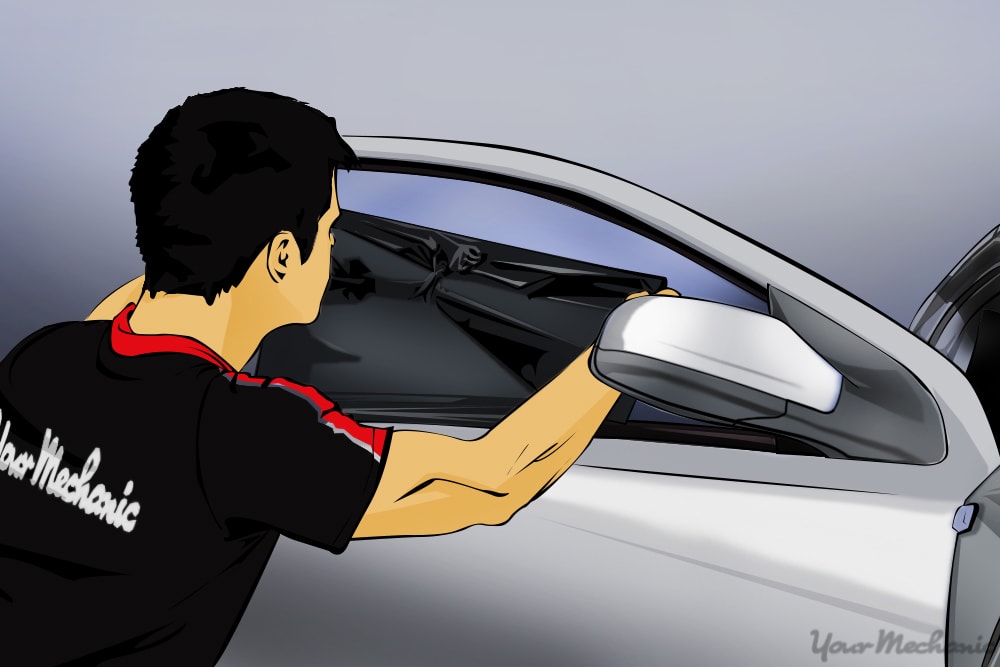How Long Does It Take to Tint Windows? (See The 4 Important Factors)

Contents
- 1 How Long Does It Take to Tint Windows?
- 2 Understanding the Window Tinting Process:
- 3 Factors Influencing Tinting Time:
- 4 Vehicle Window Tinting:
- 5 Residential and Commercial Window Tinting:
- 6 Advanced Insights into Window Tinting Durations:
- 7 Note:
How Long Does It Take to Tint Windows?
Have you ever wondered about the timeline involved in tinting windows in the United States? The process of window tinting is not just about enhancing the aesthetics of your vehicle or building but also about understanding the time investment required. In this comprehensive guide, we will delve into the factors influencing the duration of window tinting and provide valuable insights for those curious minds.
Understanding the Window Tinting Process:
Before we jump into the time frame, let’s briefly explore the window tinting process. Window tinting involves applying a thin film to the interior surface of windows, typically made from polyester and other materials. This film is designed to block or reduce the penetration of sunlight, offering various benefits such as UV protection, heat reduction, and enhanced privacy.
Factors Influencing Tinting Time:
- Type of Vehicle or Building:
- The size and type of the vehicle or building play a crucial role in determining how long the tinting process will take. Larger surfaces naturally require more time and precision.
- Type of Window Film:
- The type of window film selected can impact the time needed for installation. High-quality films may require more attention to detail but often provide longer-lasting results.
- Skill and Experience of the Installer:
- A skilled and experienced installer can significantly reduce the time required for window tinting. Their expertise ensures a smoother and more efficient process.
- Curing Time:
- After the film is applied, there is a curing or drying period. This time can vary depending on factors such as temperature and humidity.
Vehicle Window Tinting:
Standard Sedans and SUVs:
For standard sedans and SUVs, the average time for window tinting ranges from 2 to 4 hours. This includes the application of the tint film and the curing process. High-quality installations may take a bit longer due to the attention to detail.
Trucks and Larger Vehicles:
Trucks and larger vehicles with more windows may take between 3 to 5 hours. Again, the expertise of the installer and the type of film used can influence the duration.
Residential and Commercial Window Tinting:
When it comes to tinting windows in homes or commercial buildings, the time frame expands due to the larger window surfaces.
Residential Buildings:
For an average-sized home, window tinting can take anywhere from a half-day to a full day. This includes the time for preparation, application, and curing.
Commercial Buildings:
Large commercial buildings may require several days to complete the window tinting process. The scale of the project and the number of windows contribute to the extended timeline.
Advanced Insights into Window Tinting Durations:

Additional Factors Impacting Tinting Time:
1. Customization and Design Complexity:
- Consider the complexity of custom window tint designs. More intricate patterns or custom cuts can extend the installation time.
2. Legal Regulations and Compliance:
- Different states in the US have specific regulations regarding the darkness of window tints. Installers may need extra time to ensure compliance.
3. Weather Conditions:
- Weather can be a significant factor. Extreme temperatures or high humidity levels may affect the drying time of the tint film.
Tinting Techniques:
1. One-Piece Installation:
- Some installers prefer one-piece installations for seamless results. While it requires skill, it can reduce the overall installation time.
2. Computer-Cut Tinting:
- Computer-cut tinting technology enhances precision, reducing the time spent on manual cutting during the installation process.
Maintenance Tips for Efficient Tinting:
1. Post-Installation Care:
- Providing readers with post-tinting care tips ensures a longer lifespan for the tint film, contributing to the overall value of the investment.
2. Regular Inspections:
- Encourage periodic inspections of the tinted windows to identify any issues early on and maintain optimal performance.
Case Studies:
1. Speed vs. Precision:
- Explore a case study comparing a quick tinting process with a focus on speed versus a more time-intensive, precision-focused approach.
2. Commercial Project Challenges:
- Share a real-world example of a challenging commercial window tinting project, emphasizing how factors like building architecture and size influenced the duration.
Future Trends in Window Tinting:
1. Smart Tinting Technology:
- Briefly discuss emerging technologies, such as smart tinting, that could potentially revolutionize the window tinting landscape, impacting both installation time and functionality.
2. Eco-Friendly Tinting Solutions:
- Explore the growing demand for eco-friendly tinting options and how these may influence the installation process.
Note:
In conclusion, the duration of window tinting in the US varies based on multiple factors. From the type of vehicle or building to the expertise of the installer, each element plays a role in determining the time required. It’s essential to consult with a reputable tinting professional to get a more accurate estimate based on your specific needs.
Remember, while the time investment is a crucial aspect, the long-term benefits of window tinting, including energy efficiency and UV protection, make it a worthwhile endeavor. So, if you’re contemplating window tinting for your vehicle or building, understanding the process and the time involved will help you make an informed decision.
You may also like to know how much it costs to Tint car Windows.

